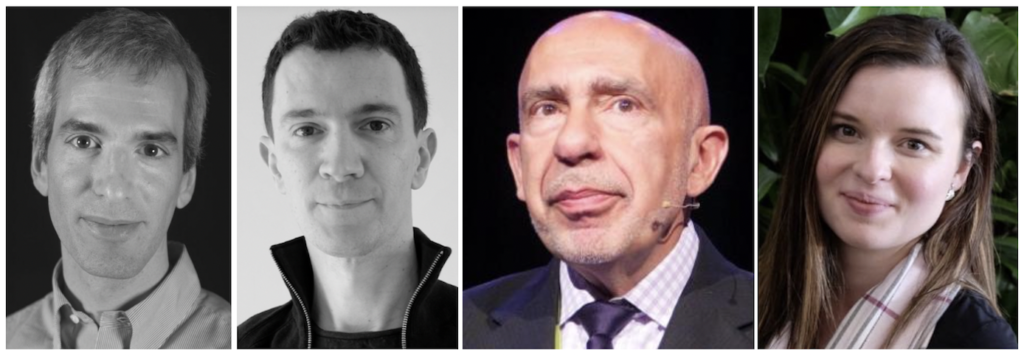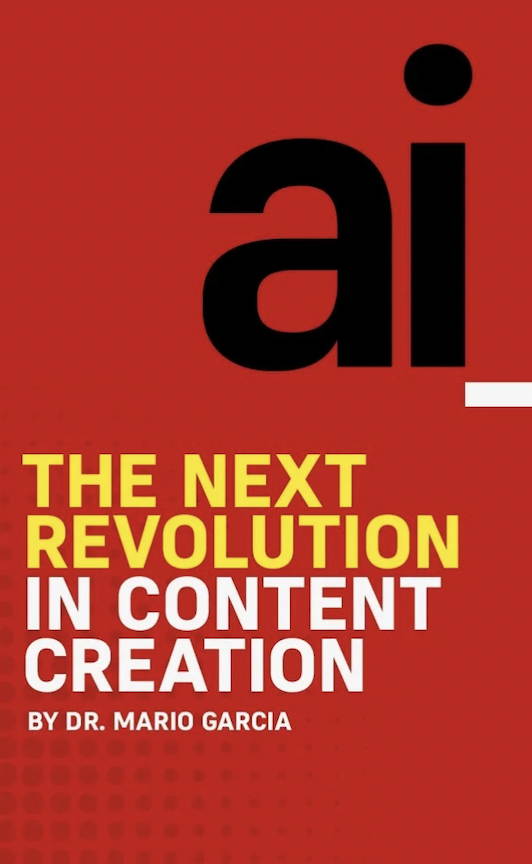A panel of experts at the Toronto roundtable on Journalism & Artificial Intelligence will offer insights on ways to integrate instruction about AI tools into universities and colleges training the next generation of newsroom reporters and editors.
The afternoon panel, chaired by broadcaster and Carleton University instructor Caroline O’Neill, includes Jeremy Caplan, director of teaching and learning at the Craig Newmark Graduate School of Journalism at City University of New York; Mario Garcia, senior adviser on news design and adjunct professor at the Columbia Journalism School; and Florent Daudens, who spearheaded the development of AI initiatives at Radio-Canada and teaches at the Université de Montreal.

Each panelist brings a wealth of experience in integrating AI in journalism and contemplating the impact of technology on the industry, making this a critical discussion for educators and professionals alike.
O’Neill has taught in the Media Production and Design program at Carleton’s School of Journalism and Communication since 2020, when she was hired to teach a class on social media. O’Neill said she sees clear parallels between social media and AI, both of which are evolving rapidly and present journalists with a range of opportunities and challenges.
‘When do you introduce AI to a journalism student? Is it something that we introduce in Year One, and do we continue to build it out throughout the rest of their educational career?’
— Caroline O’Neill, storytelling and social media instructor, Carleton University School of Journalism & Communication
“This is a really critical time when students are learning how to develop and refine their voice, and if they become too reliant on some of these tools, they can jeopardize that really crucial process in building their voice,” she said.
According to O’Neill, the integration of AI in journalism curricula should be a balancing act. She said that as it will be with teaching AI, the way she taught social media in 2024 was different from 2023, and it will likely change again in 2025.
O’Neill said there are also important questions to resolve about the timing and integration of AI education in journalism. “Something that myself and the panelists are interested in talking about is when do you introduce AI to a journalism student? Is it something that we introduce in Year One, and do we continue to build it out throughout the rest of their educational career?”
O’Neill said she believes educators should not shy away from AI but try to address the many pressing questions about academic integrity and the role that AI does and could play in journalism and other fields.
“We’re always kind of looking at how we’ll be teaching these things, how our concepts are changing. How are we telling stories? What does objectivity mean? Who gets to be objective?” she added.
“I think this is why our panel on journalism pedagogy is so critical. It’s not called ‘Journalism and AI pedagogy in the classroom’; it’s simply called pedagogy. And one of our panelists, Florent Daudens, actually has experience teaching both in the classroom, but also has experience working in newsrooms,” she said.
Daudens, now working at New York-based Hugging Face — a private AI application developer — gained extensive experience leading AI initiatives at Radio-Canada, the French-language arm of Canada’s national public broadcaster, the CBC. He teaches digital journalism at uMontreal.
‘If you don’t know about the possibilities, we will miss the train. It’s important to be informed and know the limits of AI.”
— Florent Daudens, former head of AI initiatives at Radio-Canada, journalism instructor at U de M
Daudens has emphasized the importance of understanding AI’s capabilities and limitations. “We want people to embrace AI and not suffer from it,” he said during a conversation with fellow journalism educator and AI innovator Nikita Roy on her podcast Newsroom Robots.
“If you don’t know about the possibilities, we will miss the train,” he added. “It’s important to be informed and know the limits of AI.”
He emphasized the importance of demystifying AI and advocating for a practical approach to teaching. Daudens has implemented an AI teaching assistant in his classes, where the robot can help students clarify concepts.

“The AI assistant can dig into course notes and explain concepts with infinite patience. This interaction is really interesting and helps both students and me refine our approach,” he explained to Roy.
Caplan highlights the practical applications of AI in journalism education. He uses AI tools to enhance productivity and learning.
“The first and most substantial way we’re using AI is in creating recent materials and transcripts for classes,” Caplan said. “After a session, there might be many ideas and resources that people want to refer back to. AI provinces a comprehensive summary that manual processes cannot match.”
Garcia, as the founder and CEO of Garcia Media — a New York-based editorial design and digital strategy consulting firm — has led the redesign and rethinking of more than 700 publications around the world.
Garcia is also the author of 14 books, his latest being 2023’s AI: The Next Revolution in Content Creation. The book examines how AI can assist content creators and explores the broader implications of its use in journalism. He also shares his insights through his blog, The Mario Blog, where he has discussed “fun lessons” from the book and how students have employed AI tools in their assignments.
His extensive background in news design and digital media strategy, combined with his ongoing research, positions him as a pivotal voice in the conversation about AI in journalism education.
The roundtable discussion will address what’s needed to help journalism students adapt to the rapidly changing AI landscape and will consider how well students, working journalists and educators are equipped to navigate ethical challenges posed by artificial intelligence.